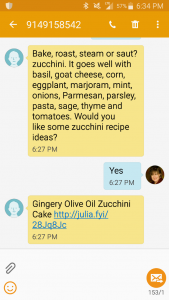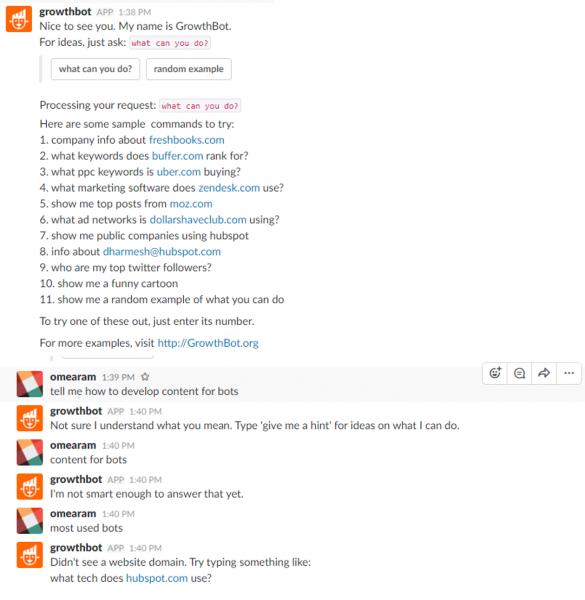You’ve heard about bots. You’ve even chatted with a bot—even if you didn’t know it. But do you know how to make a bot work for you?
Bots, algorithms, machine learning, AI… whatever you call it, these are driving how you sell to and engage with customers. These are the “people” you chat with in Facebook Messenger, Twitter, Instagram, and other social media sites, as well as just about every digital experience that invites you to chat. The bots handle the basic dialogue with users—providing information, creating excitement, and prompting sales. Bots are on the front line of customer communication, and you need to make them work for you.
A Bit About Bots
The Basics. The type of bots we are talking about use natural language processing to figure out what the user wants. By using data synthesis, filtering and curating, contextual conversations offered by bots allow personalization and involvement that can create affinity and drive actions.

My Messenger Code: Scan to Message Me!
Take Facebook Messenger: There are tens of thousands of bots on Messenger, and since Facebook figured out how to take payments within Messenger, there is no reason to leave Messenger to order your pizza, buy your new couch, get news updates, or despair over NBA stats. Good for Facebook, certainly. But also potentially good for you.
What’s interesting about Facebook’s bot engine is that it learns from each interaction. It turns natural language into structured data and parses the data to gain insights. Pretty cool.
Finding a Bot. You may have been unknowingly interacting with bots on Messenger, but what if you actually want to find one? More importantly, how will your customers find yours? Find bots on Messenger by:
- Directly search for it. Type in “Domino’s Pizza.” When you land on their page, they automatically open a message with you inviting you to place an order through Messenger.
- Some other companies aren’t that fancy, but they do have links from their Facebook page to start a conversation in Messenger.
- Some companies use customer matching based on existing customers and their phone number to start conversations in Messenger, even if the user hasn’t searched for them. (Good etiquette allows the user to opt-in to the communication.)

Place an order with Domino’s Pizza on Facebook Messenger.
- And there’s always Messenger Codes—visual cues/codes that the user can scan to initiate bot conversation. (Messenger Codes are those dots and dashes around a user’s profile photo. They work for individual’s profile photos, too.)
The Big Picture
Every way you communicate digitally with your customers is a form of conversation and needs to be part of a strategic content strategy. The content that engages with customers in bots is no exception. Make sure your conversational content is part of your content strategy so you support the messaging and experience you are working so hard to deliver.
Before you even get to the content, you need to develop a strategy that allows you to surface the content in the appropriate places with the messages that make the best sense.
- Understand how the conversation channels work.
- Understand your customers’ interests—in this environment and elsewhere.
- Synthesize the data and create filters that are meaningful for your customers. (Yep, you are defining filter bubbles. Make them meaningful.)
- Answer these key questions:
- What’s your use case?

Define conversation paths.
- Where’s your audience?
- Can you support the bot (promoting the bot, answering any questions the bot can’t answer, monitoring the customer experience you are providing)
- What’s your use case?
- Defining the (many) paths the conversation might go. You will need to map the conversational paths the users might take in order to understand the content you need to provide and the stories you need to tell.
Content Best-Practices for Bots: Five Rules and a Warning
1. Conversations, not messages. This is a conversation, not a branding message. The brand reinforcement is happening with the responsiveness of the dialog itself, not with the messaging. If users feel marketed to, they will abandon quickly.
The other part of participating in a conversation: provide useful information. Whether it is a recipe, directions, or the dimensions of the dining room table, provide actual, accurate info.

Cooking with Julia bot on SMS. Response to text of “zucchini.”
And also—really—keep it short. Chat is designed for brevity.
2. No dead ends. If your bot requires certain keywords or responds only to specific types of questions, tell users up front. You’ll lose them forever if they have to guess what makes the algorithm respond.
One way to keep the conversation going is to ask questions. Questions make the interaction feel real. They provide the user with something to respond to. Unless the user has reached the goal, you want to keep them engaged. And even if they’ve bought the table, don’t you want to show them the centerpiece that will showcase it nicely?
3. Express your personality. The chat environment tends to be really informal. While keeping within your brand and the seriousness of your topic, keep the messaging casual.

Growthbot doesn’t actually tell you what you need to do to be successful.
Make sure the language expresses your story, and that your story comes through in micro-moments. A college promoting itself as a premier research institute uses different language than a college based on nurturing tender young minds.
Choose your language and how your respond to support the impression you want the user to have. Pizza delivered quickly has a different feel than gourmet pizza worth waiting for. Like all media, this is an opportunity to tell your story.
4. Make it multimedia. As with all other digital media, users love visuals. Add images and video. Show it off. Provide an extra picture of the coffee table the user scoped online, or a map to the office they are trying to get to (or even a picture of the storefront).
5. Update it regularly. Do make the review of your messaging in bots part of your regular content review process. Pay special attention to the places where users abandoned or seemed frustrated. You may have a vision of things you want the bot to address, but if users are coming with a whole different set of questions, you’ll be more successful if you address them.

Healthtap provides useful information and a good cadence of interaction.
And the Warning….
Don’t use bots to provide information better provided by an actual person who can have a genuine response. Don’t provide really complex information. For example, a bot for a hospital might comfortably provide directions to the hospital or help setting up an appointment, but might not provide details about what possible diseases someone has contracted on vacation. That’s just better addressed by an empathetic professional.
